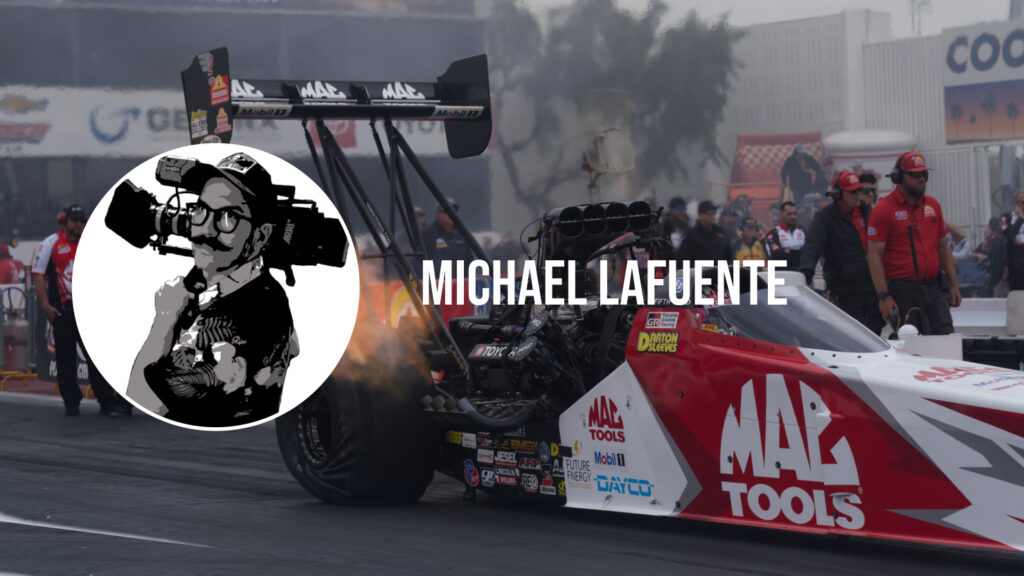Michael Lafuente formed, “The Legend of The Chicken Nachos Productions” in 2016 when beginning his production on the Award-winning documentary film, “American Cosplayer”. Since then, their production company has grown into a renowned group of colour and large format production experts. They work with companies such as Sony pictures, FOX, Disney and NBC Universal, as well as their international customers in Japan, Korea and Taiwan. Since designing their own cinema camera array for capturing 360 videos made for VR and virtual production plates, Michael has been testing the cameras abilities in new, challenging environments.
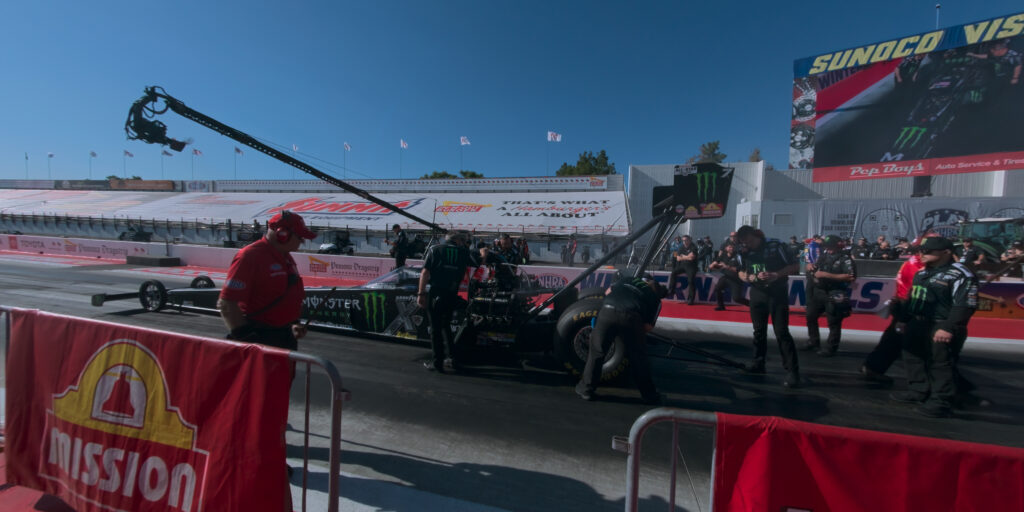
Capturing the Chaos
JoAnne Kim, a close friend and collaborator, reached out to Michael after telling Rob Hendricks – the Senior Director of Production for NHRA (National Hot Rod Association) – about his new compact 360 rig for virtual production plates and immersive captures. With Rob’s love for cutting-edge tech, the dots were quickly connected. Michaels new toy piqued Rob’s interest, and soon enough an invite came through to push the boundaries of immersive capture. The mission was to shoot plates that simulate the raw, gut-punching sensation of standing trackside at Hot Rod – something that is off limits to the average spectator, for good reason. “Let’s push the envelope and see what we can capture”, Michael replied.
This was a real challenge. With the cars producing up to 12,000 horsepower, the environment was brutal – everything was shaking, rubber and oil were flying past the lenses, and nitromethane fumes were filling the air. Michael – who was shooting 3m away on each side of the track – built a special shock mount for the 360 array to handle this wave of energy, and even with sandbags piled on to really secure the camera, “you never get used to shockwaves”, despite the countdown from the Christmas Tree bracing you for impact. But it wasn’t just the gear taking a hit. The nitro fumes had everyone on the crew choking, and these unforeseeable circumstances left Michael underprepared. After making it through the day with just a handkerchief and some resilience, the next day a respiratory mask was employed, and his lesson was learnt. Michael acknowledges the challenges of all the different shooting environments, but he jokes, “I usually don’t need to sign a waiver about my health and safety!”, reflecting the lengths Michael went to get these unbelievable shots.
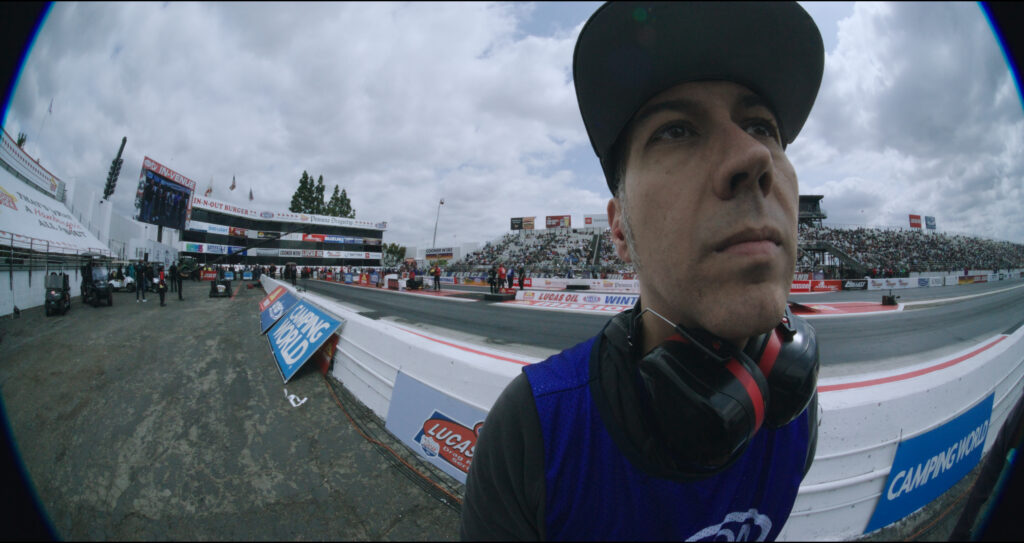
People were everywhere and the 360 crew were not the only ones capitalising on the space. Michael describes it as “controlled chaos, but very fun”. There was a lot going on between each drag race; announcers giving stats, DJ’s spinning the latest hits, officials checking the track, and the awesome, very helpful – as described by Michael – broadcast crew shooting the event. This meant they had to respect the space of others, whilst dialling in to the fleeting shoot window, alongside having to avoid getting slapped in the face by flying rubber. A tricky task made to look arguably easy by this team of professionals.
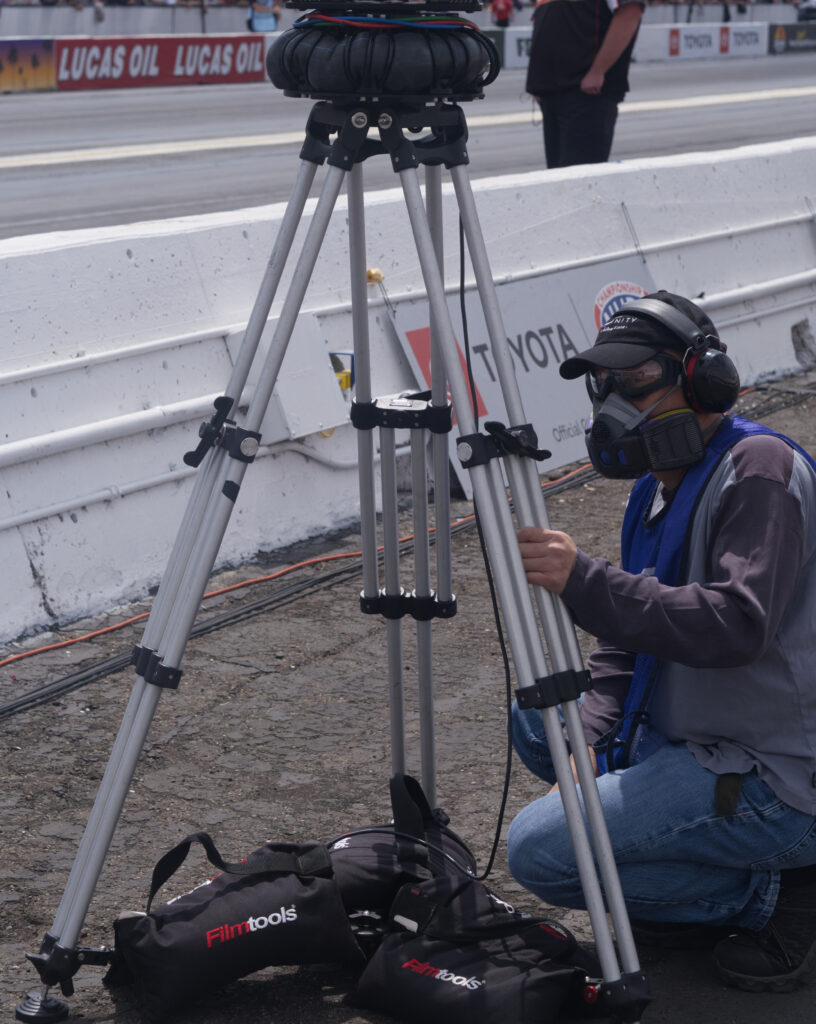
No Road Map
As a pioneer in 360 shooting capturing events like these, Michael felt himself flying a bit blind. With limited time between races, they were left with 3 minutes of set up time, like a videographer’s pit stop. With little foresight abilities due to the conditions, their initial plan was adapted after talking to the broadcast camera operators and production crew. Michael relied on the ever-trustworthy gut feeling for a lot of this process, and with prior experience in the “one-shot, get in and out quickly” dynamic, he mentally visualised how the stitch will look, and went with his guns. Although a slightly alien situation for cinematographers nowadays, Michael relates it to shooting film back in the day where you trusted the exposure setting and lens markers, to tame the fear involved in this risk.
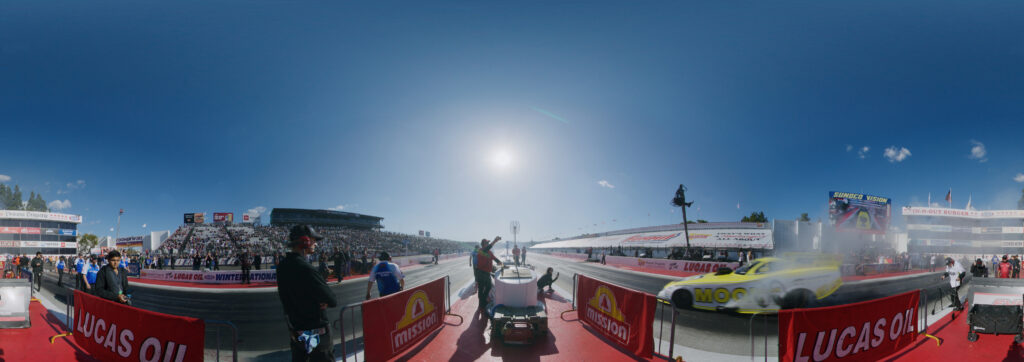
Fixing the Unfilmable: How DVOs Transformed the Footage
Michael does all his plate stitching and finishing work in Mistika Ultima, who have a seamless integration with the Filmworkz OFX DVO tools. His usual stitching composites are around 16 to 32K, but dropping an OFX DVO effect in the stack is an effortless part of his workflow. On the second shoot day, the weather turned, becoming overcast and dark. The RED cameras can get a bit noisy in low light situations, so they used the Filmworkz, DVO Clarity, to clean up the sensor noise, and keep the process speedy. The beauty of videography is the list of weather-related challenges, so equally on the second day despite there being sun, there was some minor chromatic aberration around the objects in the grandstands. This issue was swerved using DVO Chroma, making it disappear with the default setting. Additionally, Michael does stitch work on other people’s arrays and says, “I have seen some strong, thick, ugly chromatic aberrations on other people’s setups. DVO Chroma removes it every time. It’s magical! LOL!”.
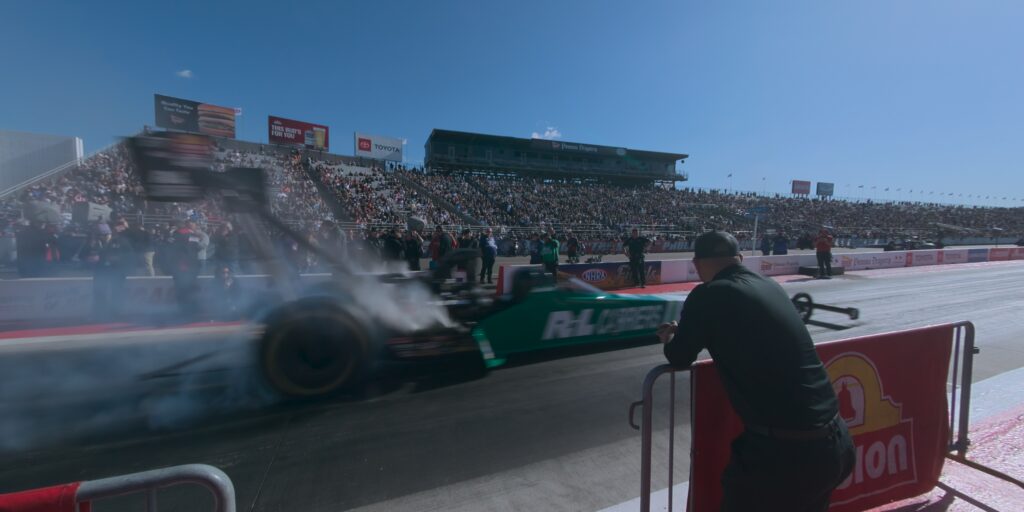
What Comes Next: Pushing the Limits of Filmmaking
Michaels hard work has paid off, as the sound capture from the broadcast married with the 360 video, really encapsulates and drives home the experience. He says, “you really do feel like you are standing on the island or the side of the track amongst controlled chaos”. This experience left Michael walking away with a million ideas to push these array captures even further. He is watching events like MotoGP thinking, “I would love to plop my array on that corner or hang it upside down from that bridge”. This risky experiment has opened a whole new creative path for Michael and his new gear, and we are excited to see what is yet to come. His slice of advice for those trying to capture fast, unpredictable environments like this one is, “Get as much information as possible and bring anything you think you may remotely need. The only dumb questions are the ones you don’t ask”, and finally for those in close contact with spraying oil, “nivea makeup remover is the best thing to remove stubborn motor oil spots from your face!”.

